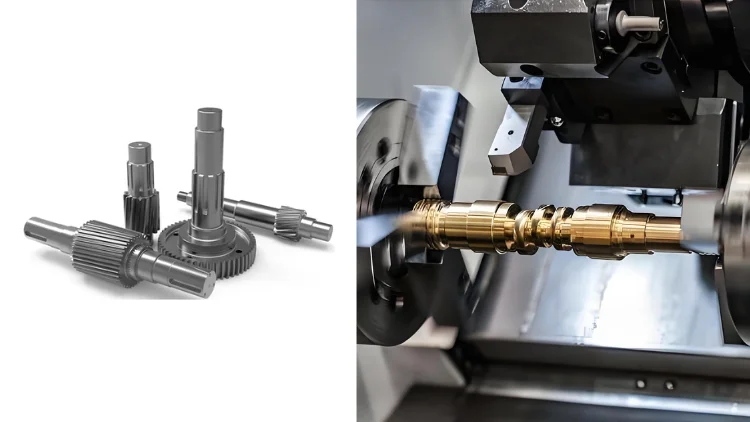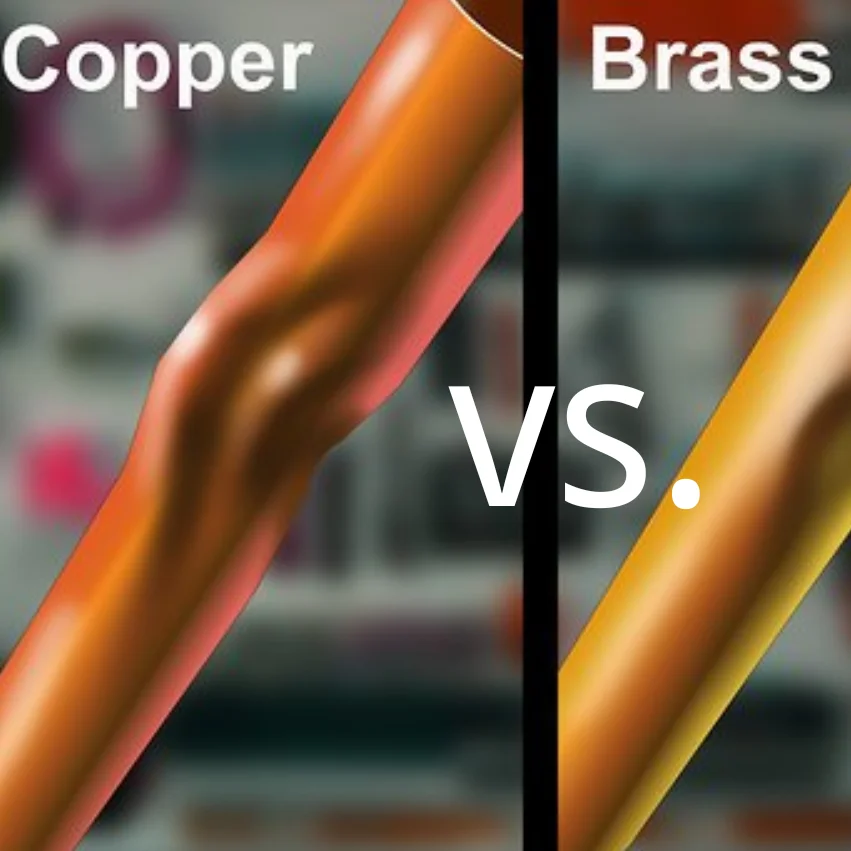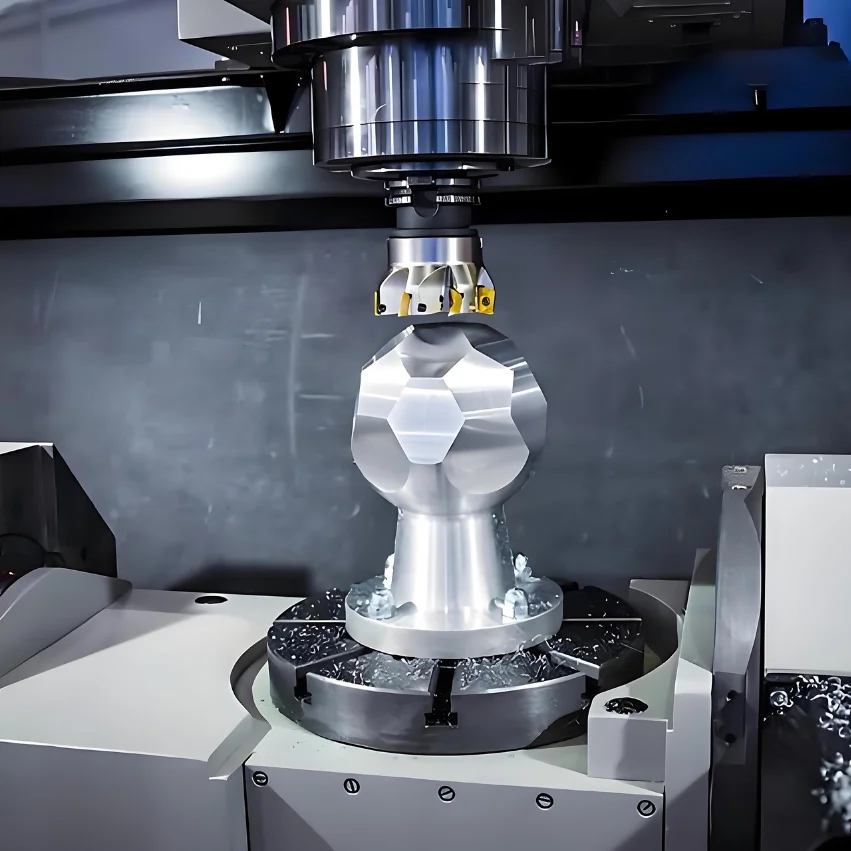CNC turning involves rotating the workpiece while the cutting tool moves in a linear motion, allowing the manufacture of cylindrical parts with precise diameter and depth. In contrast, CNC milling requires keeping the workpiece stationary while the cutting tool rotates, and the machine is able to create complex shapes and features on the workpiece surface.
Continue reading to take you through the concepts of CNC turning and CNC milling, analyze the differences between the two, and analyze the advantages and disadvantages of each.
What is CNC Turning?
CNC turning is a process that uses fixed cutting tools to drive the workpiece to rotate when the workpiece is being processed. The workpiece is mounted on the spindle and rotates at high speed. A cutting tool fixed in place moves along the workpiece to remove material and form the desired shape.
In CNC turning we usually produce cylindrical parts such as shafts, bushings, and threads. The process achieves high precision and efficiently manufactures parts with consistent diameters and smooth surfaces.

What is CNC Milling?
CNC milling is the process of removing material from a fixed workpiece using rotating cutting tools. This process is done on a CNC milling machine that is mounted on a workbench with a jig. A cutting tool attached to a spindle rotates at extremely high speeds and moves on multiple axes to carve out the desired shape.
CNC milling has a wide range of applications and can process complex three-dimensional surfaces such as planes, grooves, and trenches.

CNC Turning Advantages and Disadvantages
CNC turning excels at producing cylindrical parts with high precision and efficiency. Despite its many advantages, there are some disadvantages to be aware of when using this machining process.
Advantages of CNC Turning
Here are some of the advantages of CNC turning:
High Accuracy
The accuracy range for CNC turning is typically between ±0.0005 inches (±0.0127 mm) and ±0.002 inches (±0.0508 mm).
Efficiency
Using continuous cutting technology allows for faster material removal, allowing for efficient high-volume production.
Easy to Set Up
CNC turning setup is relatively simple, reducing downtime and increasing productivity.
Cost-Effectiveness
When manufacturing cylindrical parts, efficient, high-precision CNC turning is often more cost-effective.
Disadvantages of CNC Turning
Here are some of the disadvantages of CNC turning:
Shape Restrictions
CNC turning is mainly suitable for producing parts with rotational symmetry, such as cylinders, cones, and other parts. It is less effective at achieving complex geometries or non-circular cross-sections.
Mold
CNC turning uses a single-point cutting tool to shape the workpiece, which can form the workpiece efficiently. However, special molds for different diameters and shapes are required, and the processing cost is high.
Material Limitations
CNC turning is suitable for metals, plastics, composites and other materials that are easy to turn and cut. Other materials, such as ceramics that are very hard or brittle, are difficult to machine.
CNC Milling Advantages and Disadvantages
For complex, high-precision parts, CNC milling is the best choice. However, while CNC milling has obvious advantages, there are also certain disadvantages.
Advantages of CNC Milling
Here are some of the advantages of CNC milling:
Versatility
CNC milling can create a variety of shapes and designs, from a simple flat surface to a complex 3D contour.
Accuracy
CNC milling machines can achieve high levels of precision and accuracy, typically in the range of ±0.001 inches (±0.025 mm) to ±0.0002 inches (±0.005 mm).
Flexibility
CNC milling machines can process different materials, including metals, plastics, and composites.
Automation
CNC milling is highly automated, reducing manual intervention and improving production efficiency.
Disadvantages of CNC Milling
Here are some of the disadvantages of CNC milling:
Set Time
CNC milling machines require more complex setups, including tool changes and workpiece clamping.
Tool wear
Intermittent cutting results in faster tool wear and increased maintenance costs.
Learn more about CNC milling machine: advantages and disadvantages.
Difference Between Turning and Milling
To better understand the differences between CNC turning and CNC milling, here is an overview of the main features between the two:
| Feature | CNC Turning | CNC Milling |
| Workpiece Movement | Rotates on a spindle | Stationary, clamped on a table |
| Cutting Tool Movement | Stationary, moves linearly along the workpiece | Rotates, moves along multiple axes |
| Typical Shapes Produced | Cylindrical shapes (shafts, threads, bushings) | Various shapes (flat surfaces, slots, 3D contours) |
| Machines Used | Lathe machine | Milling machine |
| Cutting Process | Continuous cutting | Intermittent cutting |
| Precision | High precision for cylindrical parts | High precision for complex geometries |
| Setup Complexity | Simple setup | The setup is more complicated |
| Material Removal Rate | Generally higher | Generally lower |
FAQ
Is Milling the Same as Turning?
Turning rotates the workpiece against a cutting tool. It uses primarily round bar stock for machining components. Milling spins the cutting tool against a stationary workpiece. It uses primarily square or rectangular bar stock to produce components.
What is the Difference Between Turning and Milling Surface Finish?
CNC turning is well suited for creating small to medium-sized parts with a smooth surface finish. In contrast, CNC milling can be used to create larger and more complex parts with a variety of surface finishes.
What is Turning in Milling?
Turn milling is defined as the milling of a curved surface while rotating the workpiece around its center point. Eccentric forms or shapes that differ considerably from those produced by conventional turning or milling operations can often be turn-milled.
Is Turning Faster than Milling?
Turning will remove more material faster than milling, but with tough, ductile materials (like 718) milling might have the advantage of chip control.
What are the three Types of Milling?
In the realm of milling cutters, three types emerge as foundational: the Roughing End Mill, the Slab Mill, and the End Mill Cutter. These three cutter types have distinct applications and offer unique advantages.
What is the Process of Milling?
Milling is a process where a milling tool cuts away the material in a rotary motion. As with drilling, this is possible with a wide array of different tools with different diameters and different hardness. Because the mill is moving, the rotational speed must be high in order to get a clean finish of the milled hole.
Summary
Understanding the differences between CNC turning and milling can go a long way in choosing the right machining process for your project.
If you are looking for a CNC turning or CNC milling service, you can contact us today to get a quote for your project.




